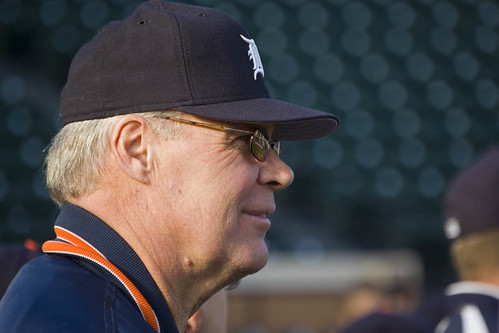Casey At The Mike: The Mayor Will Now Don A Headset
But now, in his new role, everyone will get to hear what so many runners on first base and catchers behind home plate and reporters in clubhouses got to hear during Sean Casey's 12-year run as baseball's Mayor.
That was his nickname, The Mayor, due to Casey's affability and engaging personality. Count me among those whose experienced it, first hand. There was definitely no putting on; no hidden agenda. Casey was simply a nice guy. Period.
Casey retired as an active player this week, and immediately began his new role as a studio analyst for the fledgling MLB Network. If there was ever a ballplayer who was destined to be a chatterbox behind a microphone when he hung up his spikes, it was Sean Casey.
Casey, a Tiger in 2006 and 2007, was a career .300 hitter with average power and a mean glove at first base. His best years were in Cincinnati, but he was the only Tiger who hit a lick in the 2006 World Series loss to St. Louis. He finished up his career last season with the Red Sox.

Casey, we're told, will give us his two cents worth, and then some, on the Network's signature nightly show, MLB Tonight, during the regular season. He'll also appear this winter on The Hot Stove League.
MLB Network has signed itself a plethora of recently-retired players (and not-so-recently-retired) to function as baseball experts on TV. Casey should make the transition from player to broadcaster as easily as physically trading a bat for a microphone. He may, in fact, be another one of those guys who had to scrap and work for every ounce of success he enjoyed on the diamond, yet finds that broadcasting is as easy as turning on a faucet.
I was a little taken aback, frankly, that Casey retired at the relatively young age of 34. He's not the prototypical first sacker; you know, the one with the thunderous bat and the unmitigating power. But he's a .300 hitter who can gobble up baseballs defensively, and a left-handed stick. So I'm surprised there wasn't a market for his services, at least as a part-time player.
But the loss MLB suffers between the lines with Casey's retirement is a big gain for baseball fans with the MLB Network. I'm looking forward to listening to The Mayor's analysis.
At least this mayor wasn't impeached. He stepped down, with honor.
















 Proud Member of DIBS
Proud Member of DIBS
